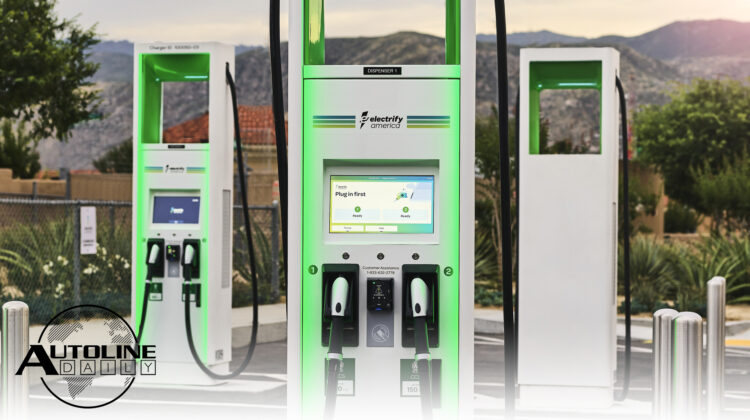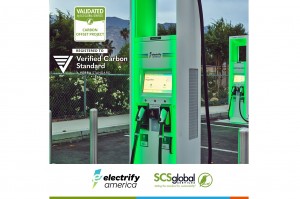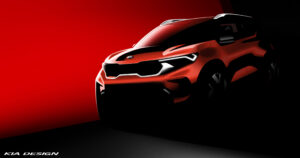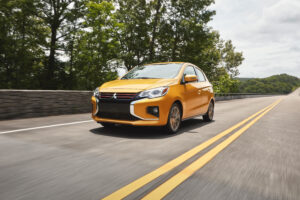
Listen to “AD #2880 – Tesla Posts Another Profit; Charging Stations Could Earn Carbon Credits; Camcon Develops Cam-less Engine” on Spreaker.
Follow us on social media:
Runtime: 9:45
0:07 Tesla Posts Another Profitable Quarter
1:03 Charging Stations Could Soon Earn Carbon Credits
1:45 Kia Shows Design Sketch of Production Sonet
2:43 Mitsubishi Updating North American Lineup
3:53 Camcon Develops Cam-less Engine
5:10 JLR Working On Contact-less Touchscreen
6:10 BMW Makes Plastic Rider to Test Racing Motorcycle
7:15 Subaru Facing Low Inventory
Visit our sponsors to thank them for their support of Autoline Daily: Bridgestone and Intrepid Control Systems.
This is Autoline Daily, the show dedicated to enthusiasts of the global automotive industry.
TESLA POSTS ANOTHER QUARTERLY PROFIT
Tesla officially announced that it’s picked Austin, Texas as the site for its next gigafactory, which will build the Model 3, Y, Cybertruck and Semi. And while Tesla’s vehicle deliveries and revenue were down in the second quarter, they beat analyst expectations and the company posted a profit for the fourth straight quarter. That allowed Tesla to apply to be included on the S&P 500 index. And if it is, institutional investors in the S&P 500 have to buy all the stock in that index, which would increase demand for the EV maker’s shares. One of the reasons Tesla was able to turn a profit is because it generated $430 million in EV credits. While some are critical of Tesla for this, generating profit from the sale of carbon credits has always been a part of the company’s business plan.
CHARGING STATIONS COULD SOON EARN CARBON CREDITS
Speaking of carbon credits, Electrify America announced the world’s first carbon offset project for EV charging systems. New methodology was developed to show how charging an EV at a station should be able to reduce CO2 emissions compared to fueling and driving gasoline-powered vehicles. The methodology has been validated but the project still needs to undergo verification that the systems really do reduce CO2 emissions. Once that’s done, Electrify America will be able to receive carbon credits, and just like Tesla or anyone else, it will be able to sell those credits to companies that want to offset their emissions.
KIA SHOWS DESIGN SKETCH OF PRODUCTION SONET
Kia showed off a rugged little SUV concept back in February, called the Sonet and now it’s showing a design sketch of the production model. It appears to keep much of the design flare from the concept as well as the rear pillar, which we think looks a bit like the Chrysler Pacifica. It sounds like Sonet will be offered in global markets, starting with India and is said to make its global premiere shortly.
MITSUBISHI UPDATING NORTH AMERICAN LINEUP
Mitsubishi is providing an update to its North American lineup. The automaker will launch three fairly considerable refreshes and one all-new, ground up redesign all by the second quarter of next year. While we don’t have all the details yet, here’s what we know. And just so you know, we’re only able to show you current models, other than the Mirage, which is the new model. Going on sale this winter is the upgraded version of the plug-in hybrid Outlander, which features a larger and more powerful engine and electric drive system. That will increase the model’s range, which currently sits at 22 EPA miles. In the first quarter of 2021, the highly refreshed Mirage, both inside and out, goes on sale as does a new Eclipse Cross with fresh styling front and rear, an upgraded interior and new infotainment system. Finally comes the all-new Outlander in Q2 next year. It’s said to be bigger and bolder as well as the quietest and best-equipped Mitsubishi ever sold in the U.S. Every Mitsubishi will also get standard Forward Collision Mitigation with Pedestrian Detection.
CAMCON DEVELOPS CAM-LESS ENGINE
For decades automakers have dreamed of controlling engine valves electronically instead of using a camshaft. By controlling each valve individually for lift and duration, they could get far more complete combustion. But electronic valve actuators always ended up using more power than they produced. So the idea never got into production. But an English company called Camcon Automotive says it’s figured out how to intelligently control valves that don’t need gobs of power. They use electromagnetic rotary actuators that can control all aspects of valve opening and closing, and yet the system runs on 12 volts. You may also remember that Koenigsegg developed a similar technology, called FreeValve, but it uses electro-hydraulic-pneumatic actuators. Camcon says its intelligent valve technology can reduce CO2 emission by 20% at the same time it increases performance and efficiency. In fact, it says this can make gasoline engines as fuel efficient as diesels, but it can also be used on diesels. And it says intelligent valves would be perfect to use in hybrids.
JLR WORKING ON CONTACT-LESS TOUCHSCREEN
In light of the pandemic, car buyers are more and more interested in vehicles that will protect them. Automakers are working on a number of solutions, including using UV light or anti-microbial coatings in vehicle interiors in order to get rid of the virus. And here’s another solution. Jaguar Land Rover and the University of Cambridge are developing a contactless infotainment display screen. The patented technology, known as predictive touch, uses artificial intelligence and sensors to predict a user’s intended target on a touchscreen, without touching a button. Initial tests show the technology could reduce the time and effort a driver interacts with the screen by up to 50%. Not only does the technology help reduce the spread of bacteria and viruses, it also helps keep the driver’s eyes on the road and makes selecting functions easier on bumpy roads.
BMW MAKES 3D PLASTIC RIDER TO TEST RACING MOTORCYCLE
Like so many sports, the pandemic forced the WorldSBK motorcycle racing series to shut down for several months. But teams still needed to continue tests to be ready once the season resumed. However, in the case of BMW Motorrad Motorsport, its riders weren’t able to go to its test facility in Germany due to travel restrictions. Aerodynamics are extremely important and you can’t get it right without a rider on the bike. So it created a 3D model of one of its riders, Eugene Laverty, to test its S 1000 RR bike in the wind tunnel. The company took detailed measurements of him with a 3D scanner, then made a plastic model out of him, which has now been used 50 times. The WorldSBK season resumes the first week of August in Spain.
SUBARU FACING LOW INVENTORY
Subaru was on its way to having its best year ever in the U.S. before the pandemic. Sales plunged early on because of lockdowns, but they’re picking back up for the company. While that’s good news, Tom Doll, the President and CEO of Subaru of America told us on Autoline This Week, it’s now facing low inventory.
Tom Doll, President & CEO, Subaru of America
“So far, we’re down, for the first six months of the year, we’re down about 21%, the industry is down about 24% as you’ve said. We had, in terms of market share, in June we had our best market share month ever, we had 4.8% total market share. And in retail, if you exclude the fleet and the other stuff that gets added into that, we had about a 5.4% market share. So, we’re still down. We were down roughly 12% in June. March and April, we were down 47% each of those months, recovered in May, maybe we were down about 17-18% and in June we were down about 12%. So, every month it’s gotten a little bit better from a sales standpoint. And June was not too bad all things considered. Our days’ supply is now getting to be quite low, we’ve only got about a 28-days’ supply of inventory. Some of our key product lines, the ‘Four Horseman’ as we call them, the Outback, the Forester, the Crosstrek and the Ascent, those days’ supplies are very, very low. So, efficiency is going to be key in July in order for us to be able to sustain our momentum.”
You can watch that entire show right now on our website or on our YouTube channel.
Did you know that General Motors revived its Defense division? It’s getting back into developing military equipment and just landed a big contract from the Army. It’s going to make what they call the ISV, the Infantry Squad Vehicle, and it has impressive hard-core, off-road capabilities. The chief engineer of GM Defense, Mark Dickens, will be our special guest on Autoline After Hours this afternoon. So join John and Gary at 3PM eastern time today, for some of the latest developments in the automotive industry.
But that wraps up today’s show, thanks for watching.
Thanks to our partner for embedding Autoline Daily on its website: WardsAuto.com

John McElroy is an influential thought leader in the automotive industry. He is a journalist, lecturer, commentator and entrepreneur. He created “Autoline Daily,” the first industry webcast of industry news and analysis.










